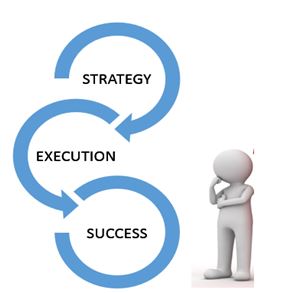 In my previous post I mentioned that Physical Asset Management is the business discipline for managing physical assets over their entire lifecycle to achieve a desired level of service, while minimizing the lifecycle costs within an acceptable level of risk. The definition of asset management has come a long way since it was first formulated by Australian economist Dr. Penny Burns in 1984. At around the same time there has been some significant development in the field of physical asset management across the globe from Australia and New Zealand to the United States of America and through Europe and the United Kingdom. Different approaches, principles, standards and conceptual models were developed to illustrate the breadth and depth of activities required to manage physical assets. The best asset management practices are outlined in the International Infrastructure Management Manual first published in 2000 with input from the public and private sector industry of Australia, New Zealand, United States, South Africa and the United Kingdom. PAS 55 Standard, developed by Institute of Asset Management (IAM) came along in 2004 and defined Physical Asset Management as "the systematic and coordinated activities and practices through which an organization optimally and sustainably manages its assets and asset systems, their associated performance, risks and expenditures over their life cycles for the purpose of achieving its organizational plan". In 2009, the Canadian National Asset Management Working Group of the National Round Table on Sustainable Infrastructure (NRTSI) developed an Asset Management Governance Framework for Canada, which defines asset management as “an integrated business approach involving planning, finance, engineering and operations to effectively manage existing and new infrastructure to maximize benefits, reduce risk and provide satisfactory levels of service to community users in a socially, environmentally and economically sustainable manner”. In 2011, the Global Forum of Maintenance and Asset Management (GFMAM) published the Asset Management Landscape, which include the subjects and fundamentals (39 subjects) that depict the discipline of asset management. In 2014, the International Organization for Standardization (ISO) produced the ISO 55000 series of standards, which defines physical asset management as "the set of coordinated activities that an organization uses to realize value from assets in the delivery of its outcomes or objectives. Realization of value requires the achievement of a balance of costs, risks and benefits, often over different timescales". Why do we have to go through the evolution and above definitions of physical asset management? Well the main objective is to see how successful we have been in implementing physical asset management. STRATEGY + EXECUTION = SUCCESS We all know that strategic thought and planning are very important, but we must recognize that execution of the strategy is the key to achieving success. How well are we executing physical asset management in our organizations? To answer this question I want to highlight two key sets of words in the above quoted definitions:
Let's first look at the activities/practices/business approach. These are the:
Is the “activities/practices/business approach” a sign of successful execution of Physical Asset Management in your organization? What about being “coordinated/integrated”? Is the “activities/practices/business approach” of Physical Asset Management well coordinated and integrated in your organization? For a successful execution of Physical Asset Management or HPAM as I like to call it, your organization may need a Paradigm Shift! Posted by Dharmen Dhaliah
10 Comments
11/17/2023 01:17:57 am
Play, conquer, repeat – experience the infinite loop of gaming ecstasy here!
Reply
3/28/2024 02:29:16 am
With emerging research suggesting potential benefits for mood regulation and cognitive function. As more individuals seek alternatives to conventional medications, CBD vapes offer a safe and non invasive option with minimal side effects.
Reply
3/28/2024 02:35:04 am
Especially in low-light conditions or bad weather. LED lights also have a quicker response time, allowing drivers behind to react faster to your braking signals, thus enhancing overall road safety for both you and other motorists.
Reply
3/28/2024 02:47:40 am
Stay connected and entertained while on the road with a range of tech accessories designed for your truck. From smartphone mounts and Bluetooth adapters to in-dash multimedia systems and GPS navigation units.
Reply
3/28/2024 02:57:57 am
Its approval provides healthcare providers with a potent tool to address the complex challenge of obesity effectively. Clinical trials have consistently demonstrated the efficacy of semaglutide in promoting weight loss.
Reply
3/28/2024 03:04:40 am
Strategic partnerships facilitate cross-promotion, co-branded campaigns, and joint initiatives that enhance your brand visibility and credibility, ultimately driving more leads and conversions.
Reply
3/28/2024 03:28:24 am
By incorporating these supplements into their routine, busy individuals can replenish lost minerals, enhance resilience to stress, and maintain optimal health in the face of demanding lifestyles.
Reply
3/28/2024 03:29:14 am
Reddit's anonymity can be both a blessing and a curse for bloggers. On one hand, it allows individuals to express themselves freely without the fear of judgment or repercussions. This freedom fosters creativity and authenticity, enabling bloggers to share their unfiltered thoughts and experiences. However, anonymity also comes with challenges such as trolls, spam, and impersonation, which can detract from the blogging experience and require active moderation.
Reply
3/28/2024 03:33:48 am
By consistently producing high-quality content, earning backlinks from reputable sources, and providing a seamless user experience, businesses can strengthen their brand reputation and foster trust with their target audience.
Reply
Leave a Reply. |
FollowAuthorDharmen Dhaliah, P.Eng, MBA, PMP, CAMA, MMP, CMRP Archives
October 2021
Categories |

 RSS Feed
RSS Feed